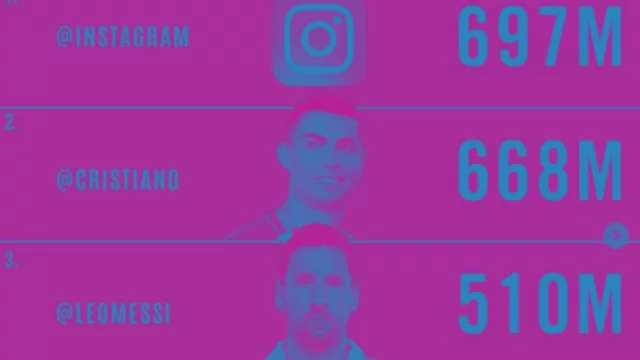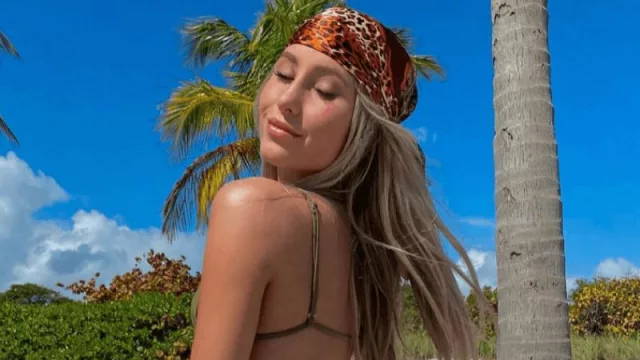The tremendous loss of attention span, concentration, patience, and focus goes beyond an intellectual matter. Not sitting down to do a single task that requires attention, concentration, reading, or following something that is not a shock of new things in 10 seconds or less, as IG or TikTok demands, makes humans emotionally more anxious, unstable, easily frustrated, and causes a myriad of relationship problems.
The brain starts to crave instant gratification and, even worse, believes that everything it is told is already true.
Journalists are trailing behind influencers when it comes to driving conversations about news on TikTok and other younger social media platforms. News performs well on Facebook and Twitter but lags behind on the rest. Despite its decreasing relevance, Facebook remains the most important social media platform for information.
More valuable information from the report:
One of the most surprising conclusions is that while journalists often lead conversations about news on Twitter and Facebook, they struggle to capture attention on newer platforms like Instagram, Snapchat, and TikTok, where celebrities, influencers, and ordinary people are often more prominent, even when it comes to news discussions, according to the researchers' comments.
The study, which surveyed about 94,000 adults from 46 markets earlier this year, revealed that "news" outperformed "celebrities" (influencers and famous personalities) on Facebook and Twitter. However, the latter group prevailed on TikTok, Instagram, Snapchat, and YouTube.
Some traditional media outlets have made their way into TikTok. NPR's Planet Money, for example, created a successful TikTok account by engaging in the comments and turning one of their professionals into the star of their videos.
But these are more exceptions than the rule, as the Reuters report highlights the persistent concern among publishers regarding the lack of solid monetization options and TikTok's connections with China.
Journalists may also find that the format of some of the newer social media platforms makes it difficult to build an audience. While they can use text and links to promote their work on Facebook and Twitter, they must learn to navigate video formats to participate on TikTok.
Although TikTok was the fastest-growing platform in the Reuters report, Facebook remained the most significant overall, with 28% of consumers using it to get news in the past week. This figure represents a 14-percentage-point drop from its peak of 42% in 2016.
"Facebook has been distancing itself from news for some time, reducing the percentage of news people see in their feed (3% according to the company's latest figures as of March 2023). Over the past year, it has also been reducing direct payments to publishers and other schemes that support journalism," emphasized the researchers.
Competition itself is driving Facebook to either change or perish... "tens of millions will be lost" in the coming years if the social network does not reform itself.
YouTube ranked second with 20%, followed by WhatsApp (16%), Instagram (14%), Twitter (11%), TikTok (6%, up from 1% in 2020), Messenger (6%), and Snapchat (2%).
And the researchers add, "Although the average usage for TikTok is relatively low, it is much higher among younger age groups, as well as in some Asia-Pacific, Latin American, and African countries."
The Reuters report also identifies differences in the topics that resonate on different social media platforms, which could hinder the efforts of journalists and media outlets to penetrate all of them with the same content.
"Twitter users are more likely to pay attention to hard-hitting topics like politics and business news, while users of other platforms like TikTok, Instagram, and Facebook are slightly more inclined to consume entertaining posts related to current events," the study states.
The challenge of discerning accurate information solely through the use of apps.
The use of social media platforms and applications presents challenges in evaluating the truthfulness and reliability of information. Here are some associated problems:
- Dissemination of misinformation: Social media platforms and apps provide fertile ground for the spread of false and misleading information. The lack of verification and quality control can lead to the massive dissemination of fake news.
- Cited research: Stanford University study on the spread of misinformation on social media (Vosoughi et al., 2018).
- Confirmation bias: Social media platforms and apps tend to display content based on personalized algorithms, which can reinforce existing beliefs and
- opinions, limiting exposure to different perspectives.
- Cited research: University of Michigan study on confirmation bias in the use of social media (Nguyen et al., 2020).
- Lack of context and depth: The brevity and fragmented nature of content on platforms like TikTok can make it challenging to obtain complete and accurate information. The lack of context can lead to misinterpretations or oversimplifications.
- Cited research: University of California research on the impact of message brevity on information comprehension and retention (Diemand-Yauman et al., 2011).
Recommendations to address these problems: - Promote media literacy: Foster education and awareness about critically evaluating information in digital environments, teaching individuals to identify reliable sources and verify information's truthfulness.
- Develop critical thinking skills: Empower individuals to analyze and question the information they consume, considering multiple perspectives and evidence before forming opinions or sharing content.
Promote diverse sources:
- Encourage seeking and accessing diverse sources of information, including reliable media outlets, academic research, and field experts.
- Encourage platform responsibility: Urge social media platforms and apps to implement measures to reduce the spread of misinformation and improve transparency in the algorithms used to display content.
- Strengthen collaboration between journalists and influencers: Foster collaboration between journalists and social media influencers to ensure the dissemination of accurate and verified information.
Key guidelines for using and consuming digital content products for all ages:
- Reading, whether on digital or paper media, remains crucial for intellectual development and access to information.
- The excessive use of social media platforms and apps presents challenges in terms of distraction and evaluating the truthfulness of information.
- It is essential to promote media literacy and critical thinking to address these issues and ensure that the public can access reliable and quality information in the current digital environment.
References:
- Rideout, V., Starr, R., & Sweeney, D. (2018). The Common Sense Census: Media Use by Kids Age Zero to Eight 2017. Common Sense Media.
- Mangen, A., Walgermo, B. R., & Brønnick, K. (2019). Reading linear texts on paper versus computer screen: Effects on reading comprehension. International Journal of Educational Research, 88, 48-61.
- Reyna, J., Niederhauser, D., & Schraw, G. (2021). Interactive digital text: A review of the research. Computers & Education, 161, 104042.
McAlone, N. (2023). "Influencers surpass journalists as news sources on TikTok and other popular social media platforms." Business Insider. Retrieved from: - Baron, N. S. (2015). Words Onscreen: The Fate of Reading in a Digital World. Oxford University Press.
- Vosoughi, S., Roy, D., & Aral, S. (2018). The spread of true and false news online. Science, 359(6380), 1146-1151.
- Nguyen, T., Hua, J., & Wang, J. (2020). Information, Misinformation and Media Effects. Annual Review of Psychology, 71, 105-128.
- Diemand-Yauman, C., Oppenheimer, D. M., & Vaughan, E. B. (2011). Fortune favors the bold (and the italicized): Effects of disfluency on educational outcomes. Cognition, 118(1), 111-115.












Tu opinión enriquece este artículo: